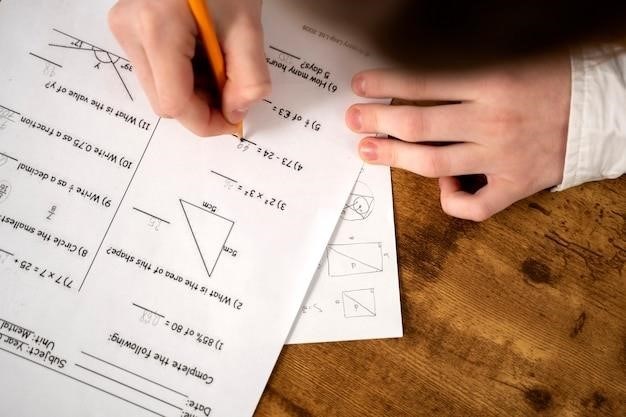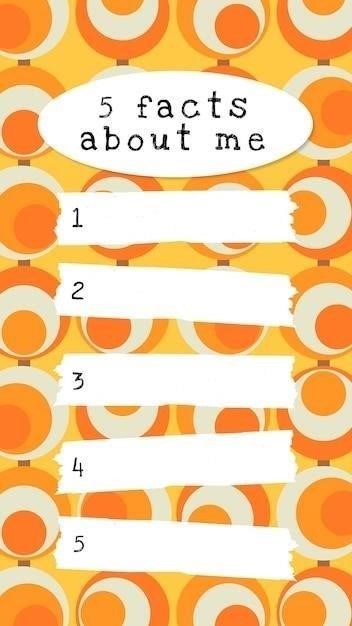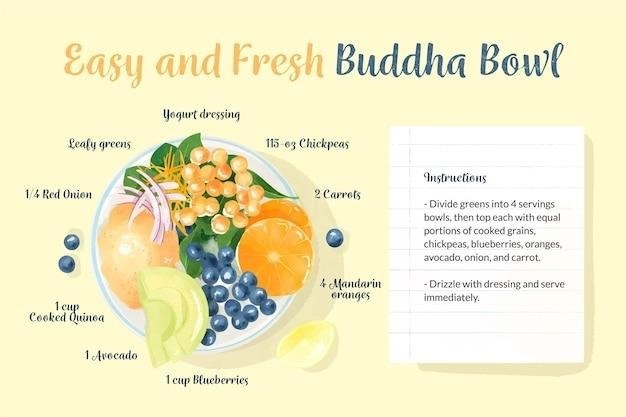The TENS 7000 Rechargeable Unit is a prescription-grade‚ customizable pain relief device designed for efficiency and safety. This guide provides comprehensive instructions for owners to maximize its use‚ ensuring effective pain management through adjustable settings and a rechargeable battery. Always read the manual before operation to understand proper usage and safety precautions.
1.1 What is the TENS 7000 Rechargeable Unit?
The TENS 7000 Rechargeable Unit is a prescription-grade transcutaneous electrical nerve stimulator designed for pain relief. Manufactured by Compass Health Brands‚ it offers customizable settings‚ a rechargeable battery‚ and adjustable intensity levels. This portable device is intended for both professional and home use‚ providing efficient pain management through electrical impulses. It is built with a user-friendly interface and durable construction‚ making it ideal for long-term use. The unit is accompanied by a comprehensive user manual detailing its operation‚ safety guidelines‚ and maintenance tips to ensure optimal performance and user safety.
1.2 Purpose of the User Guide
The purpose of the TENS 7000 Rechargeable Unit user guide is to provide owners and operators with essential information for safe and effective use. This manual covers general safety precautions‚ operating instructions‚ maintenance tips‚ and troubleshooting common issues. It also outlines the device’s features‚ such as customizable settings and rechargeable battery‚ ensuring users can maximize its benefits. The guide is designed to help users understand the unit’s functionality‚ optimize its performance‚ and address any challenges they may encounter‚ promoting a seamless experience with the TENS 7000 for pain relief.

Safety Information
The TENS 7000 Rechargeable Unit requires proper handling to ensure safe operation. Improper use or modification can lead to electrical hazards. Always follow guidelines provided.
2.1 General Safety Precautions
The TENS 7000 Rechargeable Unit is designed for safe and effective use when operated according to the guidelines. Always use the device as intended and avoid modifying or tampering with it. Ensure the unit and electrodes are not used near water or in humid environments to prevent electrical hazards. Avoid placing electrodes on sensitive areas without medical advice. Do not use the device if you suspect damage to the cables‚ electrodes‚ or unit. Keep the device out of reach of children and ensure all users are at least 16 years old. Always read the user guide thoroughly before operation.
2.2 Contraindications for Use
The TENS 7000 Rechargeable Unit is not suitable for all individuals. It should not be used by pregnant women‚ individuals with implanted pacemakers‚ or those with epilepsy. Persons with heart disease‚ cancer‚ or recent injuries should consult a healthcare professional before use. The device is not intended for children under 16 years old. Do not use TENS therapy if you have a deep vein thrombosis or are prone to seizures. Additionally‚ it should not be used over open wounds‚ tumor sites‚ or near the carotid sinus. Always seek medical advice if unsure about your condition or suitability for TENS therapy.
2.3 Warning Symbols and Their Meanings
Understand the warning symbols on the TENS 7000 to ensure safe operation. The caution symbol (⚠️) indicates important safety information. The high voltage symbol (⏜) warns of electrical components inside. The disconnection symbol (⏹) alerts users to turn off the device before handling electrodes. The waste disposal symbol (♳) reminds users to dispose of batteries properly. The manufacturer’s information symbol (✳️) directs users to the user guide for detailed instructions. Always refer to these symbols to avoid misuse and potential harm. They are crucial for maintaining safety and device longevity.

Features of the TENS 7000
The TENS 7000 features a rechargeable design‚ customizable intensity levels‚ and multiple treatment modes for tailored pain relief. It includes a compact‚ portable build and easy-to-use controls‚ ensuring versatility and convenience for users seeking effective pain management.
3.1 Design and Build Quality
The TENS 7000 features a compact‚ lightweight design‚ making it highly portable for on-the-go use. Its durable construction ensures long-term reliability‚ while the smooth‚ ergonomic exterior provides a comfortable grip. The unit includes a clear‚ backlit LCD screen for easy readability in various lighting conditions. Intuitive control buttons and a simple dial allow for seamless navigation and adjustments. The rechargeable battery is built-in‚ eliminating the need for disposable batteries and reducing environmental impact. Overall‚ the TENS 7000 combines functionality with a sleek‚ modern aesthetic‚ ensuring both efficiency and user satisfaction.
3.2 Customizable Settings
The TENS 7000 offers a wide range of customizable settings to tailor therapy to individual needs. Users can choose from multiple treatment modes‚ including Burst‚ Pulse‚ and Modulated settings‚ each designed for specific pain relief goals. Intensity levels are adjustable across a broad range‚ allowing precise control for comfort and effectiveness. Additionally‚ the device features adjustable pulse width and rate settings‚ enabling further personalization. These customizable options ensure a personalized therapy experience‚ catering to diverse pain conditions and user preferences. The intuitive interface makes it easy to explore and adjust settings for optimal pain management.
3.3 Rechargeable Battery
The TENS 7000 is equipped with a high-performance rechargeable lithium-ion battery‚ designed for long-lasting use. With a full charge‚ the device can operate for up to 20 hours continuously‚ providing uninterrupted therapy sessions. The battery is easily rechargeable via the included USB charger‚ ensuring convenience and portability. Low-battery alerts notify users when charging is needed‚ preventing unexpected interruptions. The rechargeable feature eliminates the need for disposable batteries‚ promoting cost savings and environmental sustainability. This reliable battery system makes the TENS 7000 a practical choice for both home and on-the-go use‚ ensuring consistent pain relief whenever needed.

How TENS Therapy Works
TENS therapy uses electrical impulses to relieve pain by interrupting nerve signals to the brain‚ reducing discomfort and promoting relaxation through non-invasive‚ safe stimulation.
4.1 Mechanism of TENS Therapy
TENS therapy works by sending low-voltage electrical impulses to the body through electrodes placed on the skin. These impulses interfere with pain signals traveling to the brain‚ reducing discomfort. The therapy operates on the Gate Control Theory‚ where non-painful stimuli (electrical impulses) close the “gates” to the brain‚ blocking pain perception. This non-invasive method stimulates nerves‚ offering relief from acute or chronic pain without medication. The TENS 7000 unit allows users to adjust intensity and modes‚ tailoring treatment to individual needs for effective‚ drug-free pain management.
4.2 Benefits of Using TENS Therapy
TENS therapy offers multiple benefits‚ including non-invasive‚ drug-free pain relief. It is highly effective for managing chronic and acute pain‚ such as back pain‚ arthritis‚ and muscle soreness. The therapy is portable‚ allowing users to administer treatment anywhere. It promotes increased mobility and reduces reliance on painkillers. TENS is also cost-effective‚ with the reusable electrodes and rechargeable battery minimizing long-term expenses. Many users experience immediate relief‚ making it a convenient option for ongoing pain management. The TENS 7000 unit is FDA-cleared‚ ensuring safety and efficacy for a wide range of conditions.

Getting Started with the TENS 7000
This section guides users through the initial steps of setting up the TENS 7000‚ from unpacking to preparing the device for its first use.
5.1 Unpacking and Inventory
When you receive the TENS 7000 Rechargeable Unit‚ carefully unpack the device and all included accessories. The package should contain the TENS unit‚ reusable electrodes‚ lead wires‚ a charging cable‚ and a user guide. Inspect each item for damage or defects. Ensure all components are accounted for to ensure proper functionality. If any items are missing or damaged‚ contact the manufacturer or supplier immediately. Familiarize yourself with each part before proceeding to the next steps. Properly organizing the accessories will help maintain the device and ensure ease of use during therapy sessions.
5.2 Charging the Device
To charge the TENS 7000‚ locate the USB charging port on the side of the unit. Insert one end of the provided USB charging cable into this port. Connect the other end to a compatible USB adapter or a powered USB port‚ such as on a computer or wall outlet. Ensure the device is turned off before charging. The LED indicator will display a red light during charging and turn green when fully charged. Avoid using the device while charging to prevent overheating. Charge the battery completely before first use to ensure optimal performance. Store the charging cable securely after use to maintain its condition.
5.3 Initial Setup and Calibration
After charging‚ turn on the TENS 7000 by pressing and holding the power button until the display lights up. Use the navigation buttons to scroll through the menu and select your preferred settings. Ensure the intensity level is set to zero before applying electrodes. Perform a self-test by pressing the test button to verify the device is functioning correctly. Calibrate the unit by following on-screen instructions‚ adjusting sensitivity as needed. Proper calibration ensures accurate therapy delivery. Once calibrated‚ the device is ready for use. Always refer to the display for guidance during setup and calibration to ensure optimal performance and safety.

Operating the TENS 7000
Operating the TENS 7000 is straightforward. Use the intuitive controls to start therapy‚ adjust settings‚ and monitor progress. The device provides clear feedback for easy operation.
6.1 Turning the Device On/Off
To turn the TENS 7000 on‚ locate the power button on the front of the device. Press and hold it for 2-3 seconds until the LED lights up. The device will enter standby mode. To turn it off‚ press and hold the same button until the LED turns off. Ensure the device is off when not in use to conserve battery life. Always confirm the device is powered off before storing or transporting it. The unit may also feature an automatic shut-off function after a period of inactivity.
6.2 Navigating the Menu System
The TENS 7000 features an intuitive menu system for easy operation. Use the navigation buttons (+‚ -‚ and MODE) to cycle through options. Press MODE to select a treatment mode‚ and use + or ⎼ to adjust intensity. The LCD screen displays current settings‚ making it easy to track changes. To return to the previous menu‚ press and hold MODE. The device also includes a lock feature to prevent accidental changes during treatment. Familiarize yourself with the menu layout to optimize your therapy sessions and explore customizable options tailored to your needs.
6.3 Adjusting Intensity Levels
To adjust intensity levels on the TENS 7000‚ use the + and ⏤ buttons. Start with a low setting and gradually increase until you feel a comfortable sensation. The device allows for precise control‚ ensuring optimal pain relief. Adjustments can be made during active treatment‚ and the LCD screen displays the current intensity level. Avoid setting the intensity too high‚ as it may cause discomfort. If sensations become too strong‚ reduce the level immediately. Proper adjustment ensures effective therapy while maintaining user comfort and safety throughout the session.

Using Electrodes
Electrodes are essential for delivering TENS therapy. Proper placement and preparation ensure effective treatment. Always use high-quality‚ compatible electrodes to maintain performance and safety during sessions.
7.1 Types of Electrodes
The TENS 7000 uses high-quality‚ reusable electrodes designed for optimal conductivity and comfort. Standard electrodes are the most common type‚ suitable for general use. Smaller electrodes (e.g.‚ 2×2 cm) are ideal for targeted pain relief in smaller areas. Pin-type electrodes are available for precise stimulation. All electrodes are pre-gelled for easy application and adhere well to the skin. Reusable electrodes can be purchased separately‚ ensuring long-term cost-effectiveness. Always use electrodes specifically designed for TENS units to ensure safety and effectiveness during therapy sessions.
7.2 Placing Electrodes Correctly
Proper electrode placement is essential for effective pain relief. Place electrodes on clean‚ dry skin near the pain area‚ ensuring they are not overlapping. Position them parallel to the skin’s surface‚ avoiding bony prominences or sensitive areas. For optimal results‚ pair electrodes should be placed 2-4 inches apart‚ either side of the pain site. Gently press the electrodes to ensure a secure connection. If hair interferes‚ trim the area but avoid shaving. Test the device at a low intensity to confirm proper placement. Adjust electrodes as needed for comfort and effectiveness during therapy.
7.3 Caring for and Reusing Electrodes
Proper care extends electrode lifespan and ensures optimal performance. After use‚ clean electrodes with mild soap and water‚ then dry thoroughly. Store them on the original protective sheet to maintain adhesion. Avoid exposure to lotions‚ oils‚ or extreme temperatures‚ as these can degrade the gel. If electrodes lose stickiness or crack‚ replace them. Regularly inspect for wear and tear. Reuse electrodes only if they retain their adhesive properties and are free from damage; Proper storage and maintenance ensure consistent therapy results and prevent premature replacement.

Treatment Modes
Treatment modes offer varied stimulation patterns to address different pain types. They provide customizable options to enhance therapy effectiveness and user comfort during sessions.
8.1 Available Treatment Modes
The TENS 7000 features multiple treatment modes to cater to different pain management needs. These include Standard‚ Pulse‚ Burst‚ and Modulated modes. Each mode delivers unique stimulation patterns to target various types of pain effectively. Standard mode provides continuous stimulation‚ while Pulse mode offers intermittent bursts for deeper penetration. Burst mode emits high-frequency pulses in short cycles‚ ideal for chronic pain. Modulated mode combines varying intensity and frequency for a dynamic treatment experience. These modes allow users to tailor therapy to their specific discomfort‚ ensuring a personalized approach to pain relief; The device’s versatility enhances its effectiveness for diverse pain conditions.
8.2 Selecting the Right Mode
Selecting the right mode on the TENS 7000 depends on the type and location of pain. For mild or superficial pain‚ Standard or Pulse modes are ideal. Burst mode is recommended for chronic or deep-seated pain‚ as it provides high-intensity bursts. Modulated mode is suitable for varying pain levels‚ offering alternating intensity and frequency. Users should start with Standard mode and adjust based on comfort and effectiveness. Experimenting with modes ensures optimal pain relief. Always begin with low intensity and gradually increase as needed for comfort. This personalized approach allows users to tailor therapy to their specific needs effectively.
8.3 Customizing Treatment Modes
Customizing treatment modes on the TENS 7000 allows users to tailor therapy to their specific needs. Adjustments can be made to pulse width‚ frequency‚ and intensity levels using the device’s control buttons. Users can experiment with these settings to find the most comfortable and effective configuration. The device also features a memory function to save preferred settings for future use. Always start with the default settings and gradually adjust as needed; Customization ensures a personalized experience‚ enhancing the effectiveness of pain relief. Regularly review and update settings to adapt to changing pain conditions for optimal results.
Maintenance and Care
Regularly clean the device with a soft cloth and mild soap solution. Store in a dry‚ cool place to maintain performance. Handle with care to prevent damage and ensure longevity.
9.1 Cleaning the Device
To maintain the TENS 7000’s performance‚ clean it regularly with a soft‚ damp cloth. Avoid harsh chemicals or abrasive materials. Turn off the device before cleaning. Gently wipe the exterior‚ paying attention to buttons and surfaces. Use a mild soap solution if necessary‚ but ensure the device is dry before use. Avoid submerging the unit in water or exposing it to excessive moisture. Regular cleaning prevents dirt buildup and ensures optimal functionality. For tougher stains‚ dampen a cloth with distilled water and gently scrub. Never use alcohol or solvents‚ as they may damage the device’s finish or internal components.
9.2 Storing the Unit
Store the TENS 7000 in a cool‚ dry place away from direct sunlight to prevent damage. Avoid extreme temperatures‚ as they may harm the battery or internal components. Keep the device clean and dry before storing. Store the unit‚ charger‚ and electrodes separately to prevent damage or tangling. Use the original packaging or a protective case for safekeeping. If storing for an extended period‚ ensure the battery is charged to at least 50% to maintain its health. Avoid humid environments and consider using silica gel packets to absorb moisture. Proper storage ensures longevity and optimal performance when in use.
9.3 Replacing Parts
Replace parts only with genuine accessories to maintain performance. Electrodes should be replaced when they lose adhesion or show signs of wear. The rechargeable battery may need replacement after several years of use. Contact an authorized distributor or the manufacturer for replacements. Lead wires and connectors can be replaced if damaged. Always turn off the device before replacing any parts. Follow the manufacturer’s instructions or consult a professional for complex replacements. Use only compatible parts to ensure safety and optimal functionality. Regular inspection and timely replacement of worn-out components will extend the life of your TENS 7000 unit.

Troubleshooting Common Issues
Troubleshoot issues like low battery‚ electrode connection problems‚ or device malfunction. Check battery levels‚ ensure proper electrode placement‚ and reset the device if necessary for optimal performance.
10.1 Identifying Common Problems
Common issues with the TENS 7000 include device malfunction‚ low battery‚ or electrode connection problems. Users may experience inconsistent intensity‚ faulty buttons‚ or unstable display. Identify these by checking power status‚ electrode placement‚ and device responsiveness. Ensure the unit is fully charged and electrodes are clean. If issues persist‚ refer to troubleshooting steps or contact support. Regular maintenance can prevent many of these problems. Always verify proper usage and adherence to guidelines to minimize device errors and ensure effective therapy sessions.
10.2 Solving Battery-Related Issues
To address battery-related problems‚ first ensure the charger is properly connected to both the device and a power source. Check for damage to the charging cable or port. If the battery isn’t charging‚ try resetting the unit by turning it off and on. If issues persist‚ the battery may need replacement. Avoid overcharging‚ as it can reduce battery life. Store the device with a partial charge if not in use for extended periods. Always use the provided charger to maintain compatibility and safety. Contact support if problems continue despite these steps.
10.3 Resolving Electrode Connection Problems
If electrodes are not connecting properly‚ ensure they are clean and free from dirt or oils. Check for visible damage to the electrode pads or wires. Securely attach electrodes to the device and skin‚ following the placement guide. If connection issues persist‚ try resetting the device or replacing the electrodes; Ensure the intensity level is adequate for proper stimulation. If problems continue‚ inspect the electrode ports for damage or debris. Clean the ports gently with a soft cloth and reconnect the electrodes. Contact customer support if the issue remains unresolved after these steps.

Warranty and Support
The TENS 7000 Rechargeable Unit is backed by a one-year warranty covering manufacturing defects. For inquiries‚ contact customer support via phone or email for assistance.
11.1 Understanding the Warranty
The TENS 7000 Rechargeable Unit is covered by a one-year limited warranty from the date of purchase. This warranty covers defects in materials and workmanship under normal use. It does not apply to damage caused by misuse‚ unauthorized modifications‚ or wear and tear. To claim warranty benefits‚ you must provide proof of purchase and contact customer support. The warranty is non-transferable and only valid for the original purchaser. For more details‚ refer to the warranty terms included in the user guide or visit the manufacturer’s website. Proper registration may be required to activate warranty coverage.






















